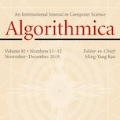In the Trivially Perfect Editing problem one is given an undirected graph $G = (V,E)$ and an integer $k$ and seeks to add or delete at most $k$ edges in $G$ to obtain a trivially perfect graph. In a recent work, Dumas, Perez and Todinca [Algorithmica 2023] proved that this problem admits a kernel with $O(k^3)$ vertices. This result heavily relies on the fact that the size of trivially perfect modules can be bounded by $O(k^2)$ as shown by Drange and Pilipczuk [Algorithmica 2018]. To obtain their cubic vertex-kernel, Dumas, Perez and Todinca [Algorithmica 2023] then showed that a more intricate structure, so-called \emph{comb}, can be reduced to $O(k^2)$ vertices. In this work we show that the bound can be improved to $O(k)$ for both aforementioned structures and thus obtain a kernel with $O(k^2)$ vertices. Our approach relies on the straightforward yet powerful observation that any large enough structure contains unaffected vertices whose neighborhood remains unchanged by an editing of size $k$, implying strong structural properties.
翻译:暂无翻译



